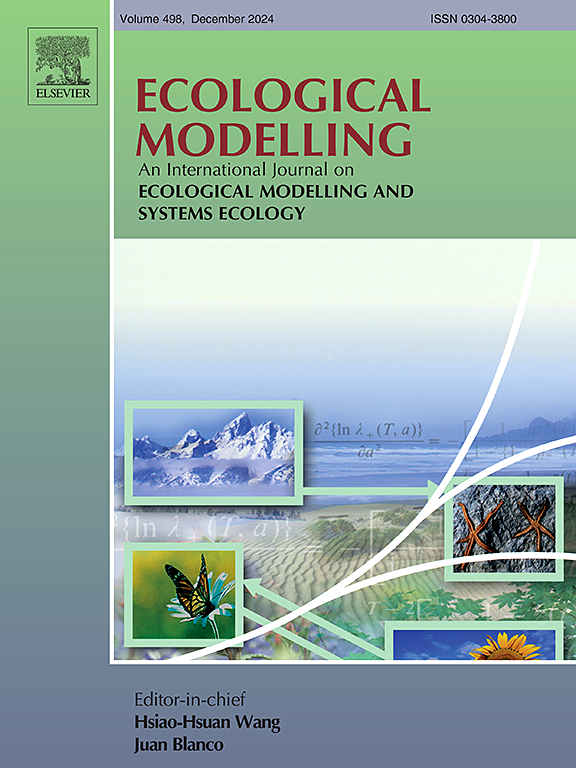Ecological effect of seasonally changing temperature on the life cycle of Aurelia aurita
IF 2.6
3区 环境科学与生态学
Q2 ECOLOGY
引用次数: 0
Abstract
Jellyfish blooms, observed as seasonal phenomena and closely related to seasonal changes in temperature, have emerged as a significant challenge for global marine ecology and environmental protection. Investigating the interplay between jellyfish growth and seasonally changing temperature is essential to understand the triggering mechanism of jellyfish blooms. A non-autonomous two-stage (Medusa-Polyp) dynamical model, which incorporates the seasonally driven temperature, is formulated to elucidate this mechanism. Both theoretical analyses and numerical simulations are conducted to explore the ecological effect of seasonally changing temperatures on the life cycle of Aurelia aurita. Seasonal control strategies are proposed to regulate jellyfish abundance, and the comparison to year-round control strategies is discussed. It is demonstrated that the cyclic variation in the jellyfish population is indeed driven by seasonally changing temperatures and the global warming leads to an earlier onset and larger magnitude of jellyfish blooms. The temperature-dependent processes in the life cycle of jellyfish are crucial for determining the annual pattern of jellyfish dynamics, and sensitivity analyses indicate that the polyp strobilation and ephyra development are key processes in life cycle. Among the parameters that can be controlled in practice, controlling them in spring and autumn is cost-effective for regulating jellyfish abundance. The findings of this study offer valuable insights into the mechanisms driving jellyfish growth from an annual perspective, and propose control strategies from different viewpoints for managing jellyfish blooms in the context of global warming.
求助全文
约1分钟内获得全文
求助全文
来源期刊

Ecological Modelling
环境科学-生态学
CiteScore
5.60
自引率
6.50%
发文量
259
审稿时长
69 days
期刊介绍:
The journal is concerned with the use of mathematical models and systems analysis for the description of ecological processes and for the sustainable management of resources. Human activity and well-being are dependent on and integrated with the functioning of ecosystems and the services they provide. We aim to understand these basic ecosystem functions using mathematical and conceptual modelling, systems analysis, thermodynamics, computer simulations, and ecological theory. This leads to a preference for process-based models embedded in theory with explicit causative agents as opposed to strictly statistical or correlative descriptions. These modelling methods can be applied to a wide spectrum of issues ranging from basic ecology to human ecology to socio-ecological systems. The journal welcomes research articles, short communications, review articles, letters to the editor, book reviews, and other communications. The journal also supports the activities of the [International Society of Ecological Modelling (ISEM)](http://www.isemna.org/).
 求助内容:
求助内容: 应助结果提醒方式:
应助结果提醒方式:


